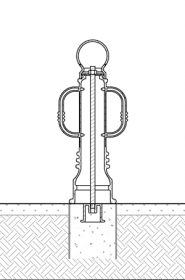Installing Bike Bollards using Concrete Forms and Anchor Castings
Reliance Foundry’s line of bike bollards provide secure bicycle storage while minimizing obstruction caused by improper bike parking. Bike bollards can be securely installed on a mixed or non-concrete surface by using anchor castings placed in concrete forms. It is important to note that with this installation method, bike bollards will provide limited impact resistance.
PARTS LIST
|
# |
PART |
QTY |
|---|---|---|
|
1 |
Bike Bollard Base with Bike Arms |
1 |
|
2 |
Bike Bollard Cap |
1 |
|
3 |
Anchor Casting 1″ (includes a plug covering top hole) |
1 |
|
4 |
Threaded Bar 1″ |
1 |
|
5 |
Washer 1″ |
1 |
|
6 |
Hex Nut 1″ |
1 |
|
7 |
Hexagon Socket Set Screw |
3 |
|
8 |
Plastic Plug |
3 |
INSTALLATION EQUIPMENT
|
3/16″ Hex Key |
1-1/2″ Wrench |
|
Dirt Tamper |
Tubed Concrete Form |
|
Chalk/Marker |
Duct Tape |
|
Measuring Tape |
|
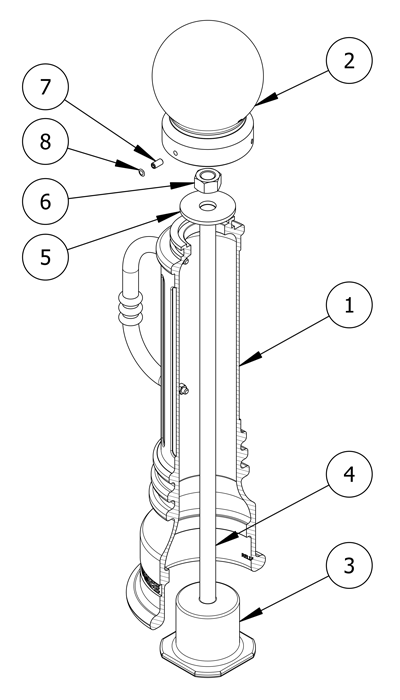
NOTE
- To protect the finish, keep bike bollards in original packaging until the exact moment of installation.
- Handle with care to avoid scratching or damaging bike bollard surfaces as abrasions will lead to rust.
- Once scratched, bike bollards cannot be repaired to original form without re-finishing the entire surface.
Before installation
Study the site plans
Site plans are generally created by the architect of the project.
Refer to site plans to locate the precise center point of each bike bollard.
Ensure that the plan coincides with the site and familiarize yourself with the intended arrangement of the bike bollards.
Check for hazards
Always check for hazards such as water pipes, gas lines, and underground wiring before digging.
Prepare the site for concrete
Please consult your local Building Code Department to determine the recommended digging depth below the frost line in your area.
The new concrete footing must reach this recommended digging depth.
Note: If the recommended digging depth is less than 12″ below surface level, dig to a minimum depth of 12″. This is recommended in order to create stability.
Cut the tubed concrete form
Tubing must have a diameter that is equal to or larger than that of the bike bollard base.
Cut the tubed concrete form to the correct length so that when placed in the prepared site, its top will be flush with the finished surface.
Note: It is crucial to leave an allowance at the top of the current surface as the landscaping material must still be added later. Consult with your landscaper to determine how much allowance is required.
Dig the site
Ensure that the diameter of the hole is large enough to hold the tubing.
Center an auger on the installation mark and bore a hole to required measurements.
Prepare tubed concrete form for concrete
Measure 4″ down from the top of the tube and mark on the inside. This marks the embedment depth for the anchor casting.
Place the concrete form in the designated position. Ensure center of tubed form lines up with center point markings.
Use dirt or gravel to fill in any voids between the concrete form and the hole.
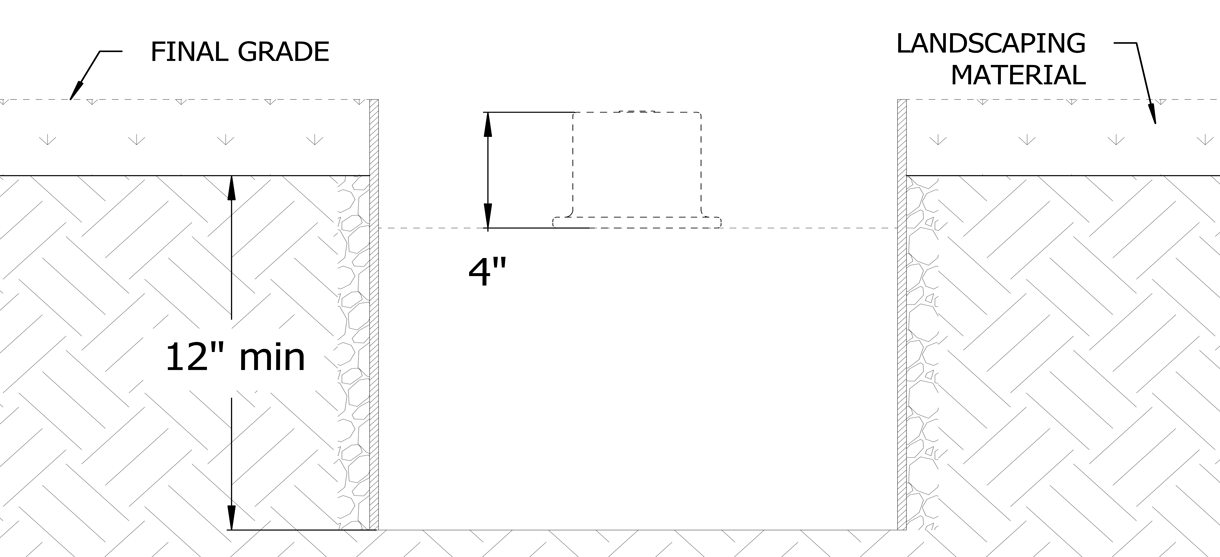
Pour the concrete
Mix and pour the concrete
Ensure that the proper ratio of water and concrete mix is used. The concrete should have a similar texture to moldable clay.
Pour the concrete into the concrete form until it reaches the previously marked embedment marking on the inside of the tubing.
Take care to pour the concrete evenly and avoid disrupting the concrete form.
Place the anchor casting in the concrete form
Cover the bottom hole of the anchor casting with duct tape to prevent debris from entering. The top hole should already be covered with the plug (A).
Lower the anchor casting into the concrete form. The top of the anchor casting should be flush with the top of the concrete form and the intended finished surface.
Continue to pour the concrete until the concrete form is filled to the top.
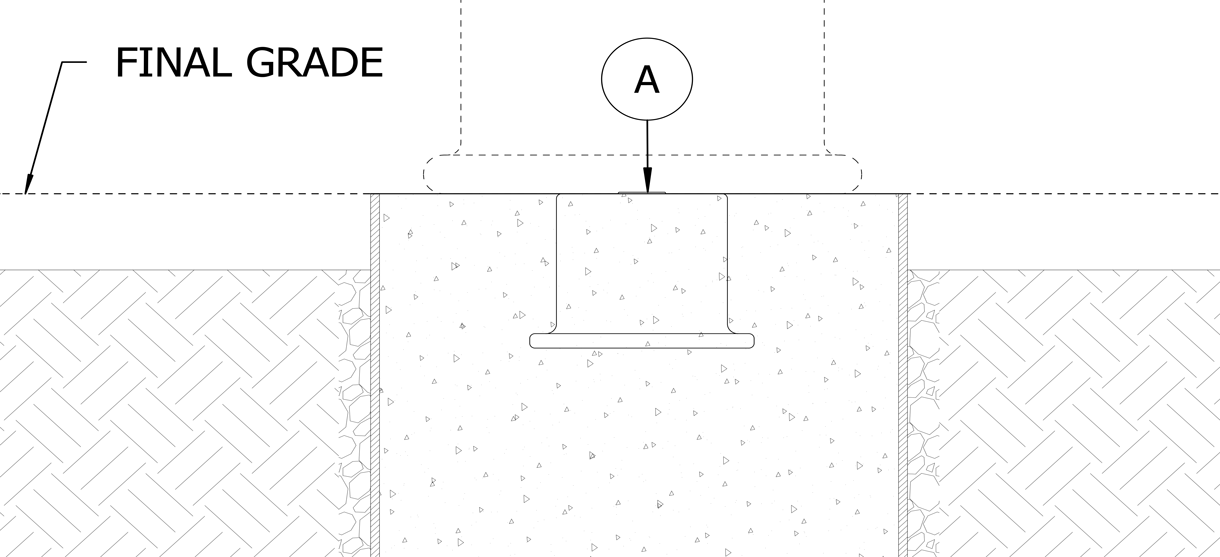
Allow the concrete to cure
A minimum of 2–3 days should be given for concrete to cure before beginning construction projects on new concrete surfaces.
Note: Moisture in the environment and cool temperatures can significantly slow the process.
Apply the landscaping material
Once the concrete has fully cured, landscaping materials such as dirt, sand, and brick can be applied around the concrete form.
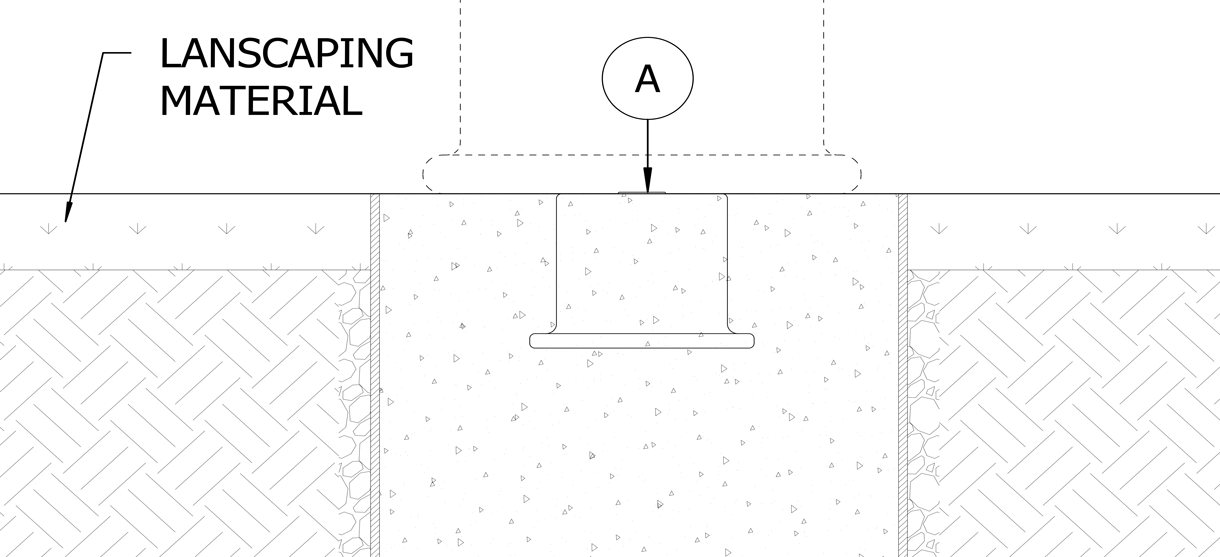
Secure the bike bollard
Place the bike bollard near the anchor casting
Keep the bike bollard in its protective packaging. After ensuring the concrete surface has fully cured, carefully place the bike bollard beside the anchor casting.
When ready to install, remove the bike bollard’s protective packaging.
Remove the plug (A) from the top hole of the anchor casting.
Set the bike bollard over the anchor casting
Set the bike bollard base upright and maneuver it so the center lines up with the threaded hole in the anchor casting.
Lower the threaded rod and tighten
Lower the threaded rod through the bike bollard base.
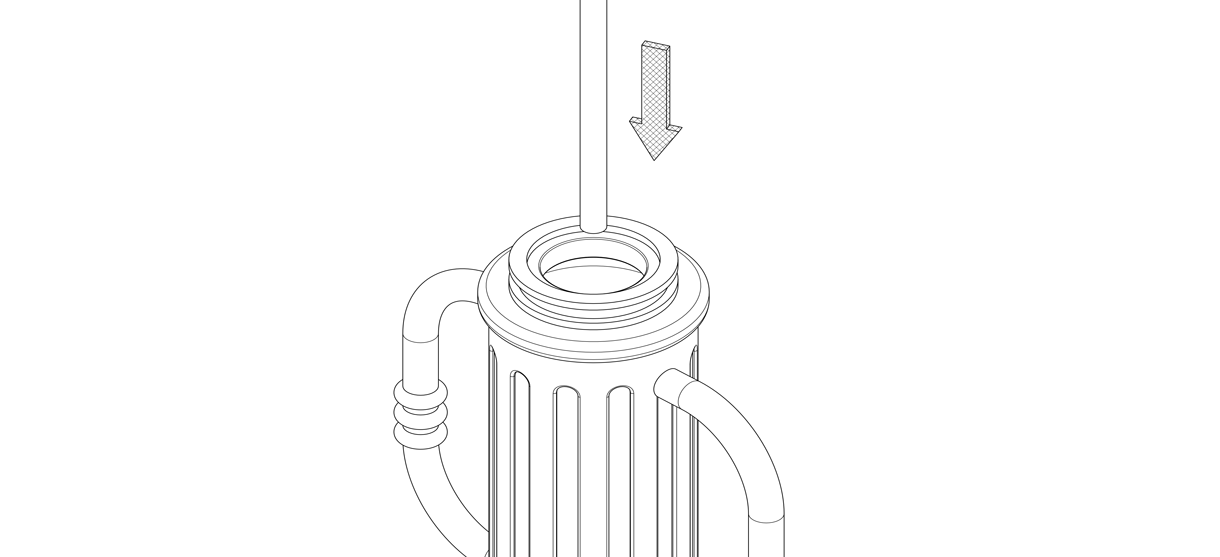
Continue to thread the rod into the anchor casting.
Tighten(1) the threaded rod by hand until it is secure in the anchor casting
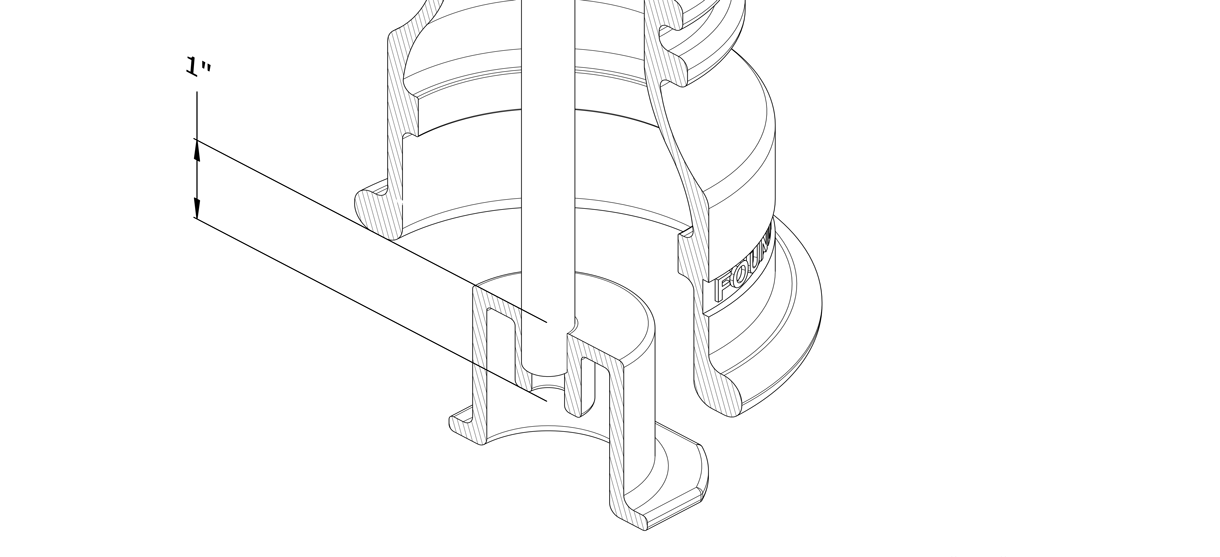
Secure the bike bollard
Place the washer over the threaded rod so that it rests on top of the shaft of the bike bollard.
Apply the 1″ nut to the threaded rod and use a wrench to tighten until the bike bollard is secure.
Note: Be sure to check the orientation of the bike bollard arms before securing the bike bollard.
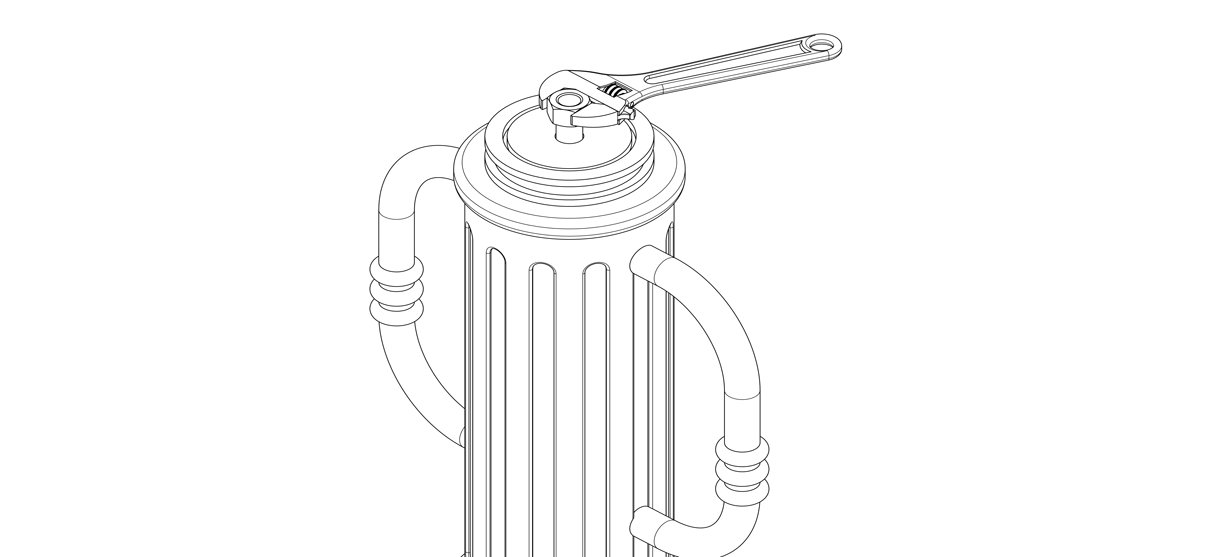
Secure the bike bollard cap
Remove the bike bollard cap from its packaging.
Place the cap on the top of the shaft of the bike bollard.
Secure and align the cap to the bike bollard base with the three set screws. Tighten in equal amounts to ensure that the cap remains centered.
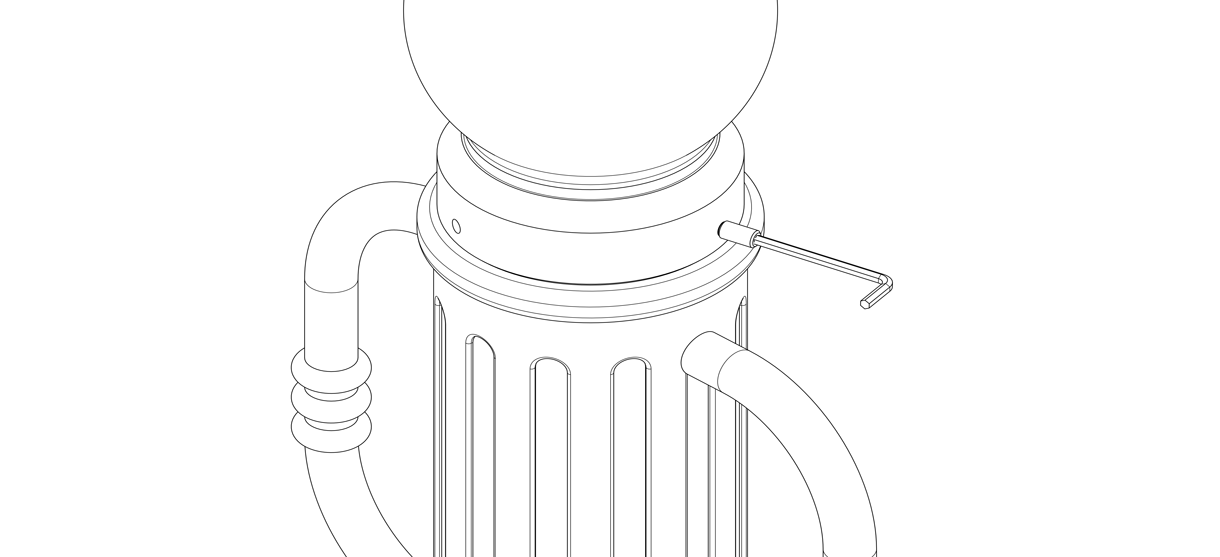
Place the plastic plugs (B) over the set screws.
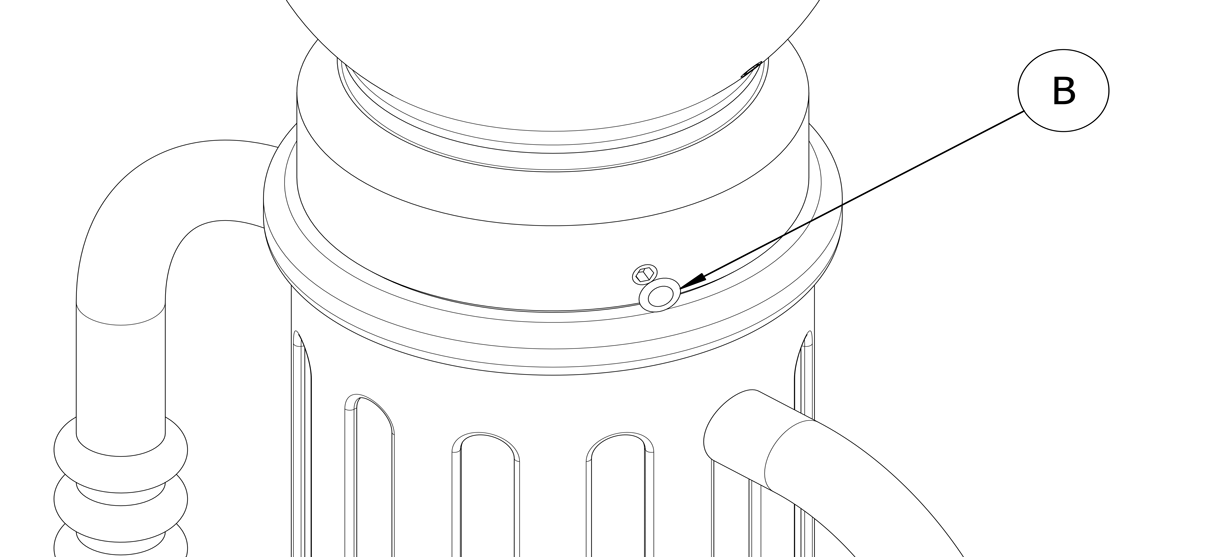
Inspect
Inspect the installation
From a distance, examine the plane of view.
Ensure the bike bollard is plumb.
Check the bike bollard for any signs of surface damage
Abrasions should be covered as soon as possible to prevent rust and ensure the proper life of the bike bollard. For damage repair or other servicing needs, please contact Reliance Foundry’s sales department.
Care and maintenance
Reliance Foundry manufactures its products to the highest design standards to ensure their durability. Reliance Foundry’s bike bollards are finished with long-lasting powder coating. In most North American environments, routine inspections and cleaning will ensure that bike bollards retain their aesthetic appeal. Proper care and maintenance are required to maintain the finish and ensure a full service life.
1. Recommended tightness is until the threaded rod reaches a depth of approximately 1″ in the anchor casting.
